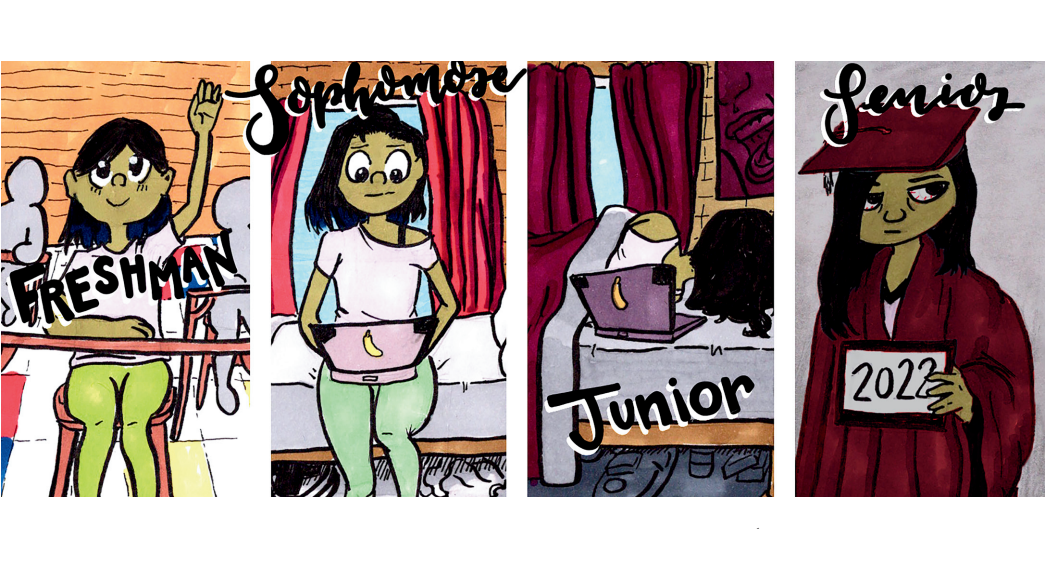An illustration shows one student as a studious freshman and sophomore, a depressed junior and a hopeless senior. The COVID-19 pandemic has disrupted the social dynamics and mental health of the Class of 2022, as the pandemic forced a break in essential years of their high school experience. experience. Illustration by Antonio Starks
The negative impact of COVID-19 on students’ mental health and social interactions is especially apparent now that CCHS students have returned to higher academic standards for a semester of traditional in-person learning
After the quarantine that caused a one year hiatus from typical social environments, the abrupt return to in-person learning in March 2021 forced students to meet the pre-pandemic social and academic standards that they were no longer used to.
Because of the social barriers that COVID-19 created and students’ adjustment to lower academic standards during digital learning, this transition back to in-person learning has not been easy. Sitting at a computer screen for hours upon end was draining, but CCHS acknowledged that openly and created accommodations that would help students succeed, such as extended deadlines and flexibility for late work submissions. These were necessary steps to ease the pressure on students at the time, but this lowered expectations for students academically.
My sophomore year, my last year of high school before the pandemic, feels like another lifetime ago. I blinked, and suddenly I’m a senior getting ready to graduate. Returning to school as an upperclassman has meant returning to the pressures I’m no longer used to.
Returning to school as an upperclassman has meant returning to the pressures I’m no longer used to.
Yes, students are getting the necessary social support from peers and teachers with full in-person learning. However, it hasn’t erased the effects of digital learning. If anything, being held to pre-pandemic standards of academia has only made mental health worse for many students.
“We see the impacts of (COVID-19) on behavior and learning how to do school, or not learning how to do
school, and then mental health has definitely taken a hit through COVID-19,” Assistant Principal Summer Smith said. “I see that across the board (in) ninth through 12th graders. We’ve got kids who are struggling.”
The transition back to in-person learning during junior year made me doubt my abilities as a student. Just like freshman and sophomore year, I had a large amount of homework and small amounts of free time, but this time, I wasn’t used to the pressure.
More drastically, pandemic has had a particularly devastating effect on the developmental learning of minorities and low-income families, worsening the effects in CCHS, a majority-minority school.
Ultimately, teachers and administrators should remain mindful of the fact that the physical return to school doesn’t mean the pre-pandemic mentality and approach to learning has remained the same.
“Students who attended schools that were majority Black or Hispanic were six months behind where they normally would have been in math, compared with four months for white students,” a July 21 New York Times article stated. “Similarly, students who attended a low-income school ended the year seven months behind their typical performance in math, compared with four months for schools where families were financially better off.”
Ultimately, teachers and administrators should remain mindful of the fact that the physical return to school doesn’t mean the pre-pandemic mentality and approach to learning has remained the same. As a student, I can say that adapting to this change hasn’t been easy. Students are carrying the weight of an almost two-year pandemic, but we’re trying our best.
